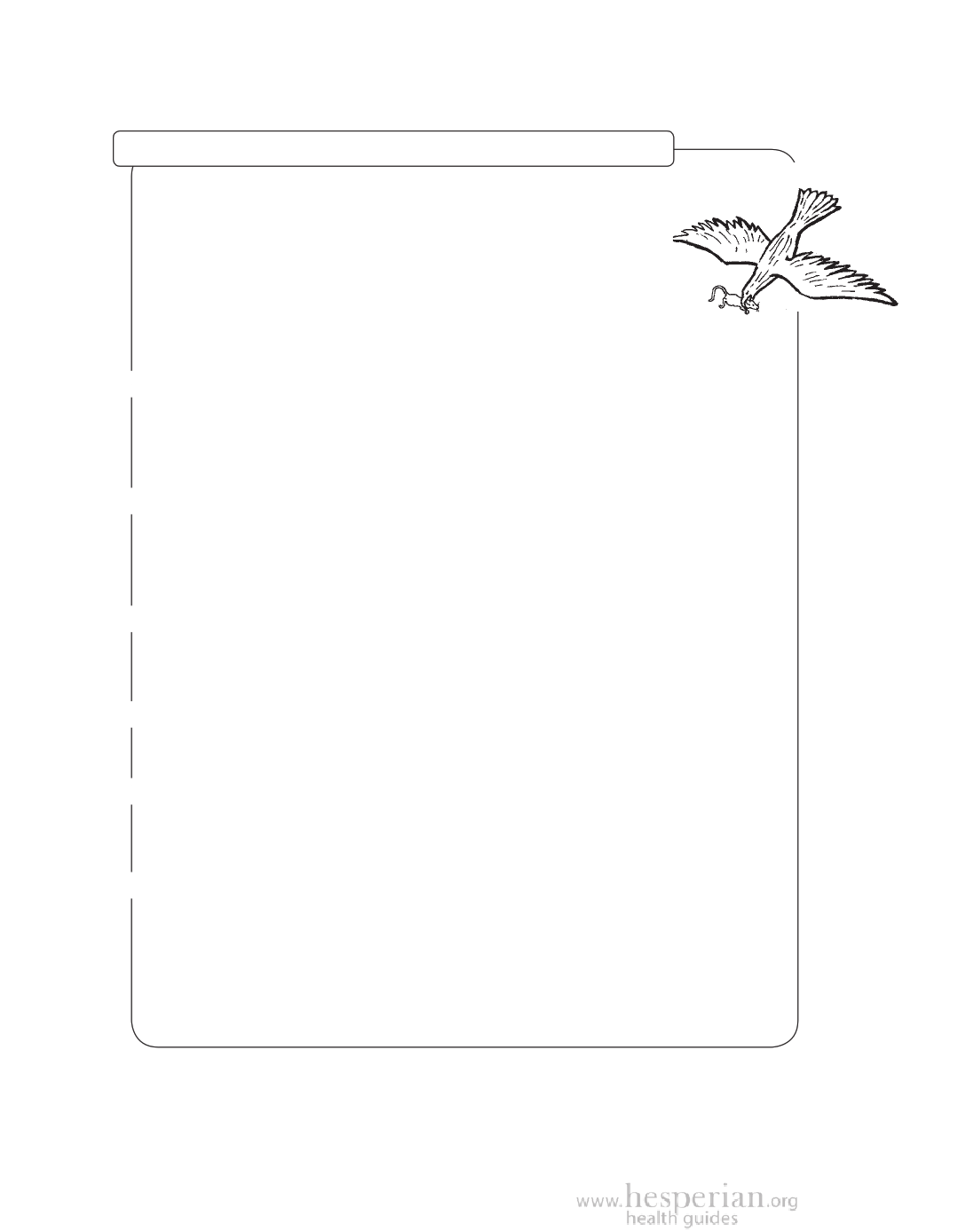
3 36 Ha r m fr o m Toxi c Ch e m i c a l s
Deadbclynblxinnckbs: Toxic chemicals pass from animals to people
In this activity, people play the parts of different kinds of animals to
show how some toxics are passed from one to another. At least 7
people are needed for this game, the more people the better!
Time: ½ hour to 1 hour
Materials: 20 or 30 necklaces made of colored beads. About half are of
one color, such as yellow, and the other half have beads of two colors,
such as yellow and red.
➊ Each person takes the role of an animal. We use hawks, mice, and grasshoppers, but
you can use any familiar animals. Choose a small number of hawks (1 or 2), more
mice (4 to 10), and lots of grasshoppers. Use armbands, signs, or other markers to
identify the different kinds of animals. The facilitator places the colored necklaces in
sight around the area where the game will be played.
➋ The facilitator announces that the colored necklaces are food for grasshoppers.
What she doesn’t say is that the red beads are toxic chemicals that have collected
in the food. The grasshoppers collect their food by putting necklaces around their
necks. Each grasshopper collects as much food as possible, remembering how
many necklaces she collected in total.
➌ Next, release the mice into the play area to hunt the grasshoppers. Whenever a
mouse catches a grasshopper, he or she puts on all the necklaces the grasshopper
was wearing and the grasshopper leaves the game. Each mouse should have time
to catch one or more grasshoppers and put on the necklaces he collects.
➍ Release the hawks into the game to hunt the mice, while the mice are hunting
grasshoppers. Any mouse caught by a hawk turns over all of its necklaces and then
sits out.
➎ Once the hawks have collected all the necklaces, all the players gather in a circle.
Ask each grasshopper and mouse how many necklaces they collected before they
were eaten and if any of these necklaces had red beads on them. Then ask the
hawks to show the necklaces they collected.
➏ Begin a discussion, telling the group that the red beads are toxic chemicals in the
food. Explain that the hawk with the most red beads dies because the most toxics
have accumulated in her body. Other hawks may survive, but will lay eggs with
thin shells or hatch sickly chicks. Ask the group to discuss how toxic chemicals get
into their water or food. What foods do people eat that may have toxic chemicals
in them? How can we keep toxic chemicals from accumulating in our bodies? How
can we keep them out of the environment?
A Community Guide to Environmental Health 2012